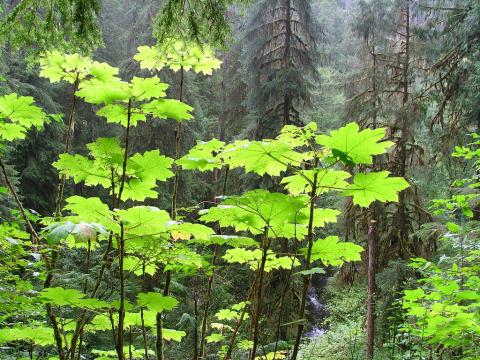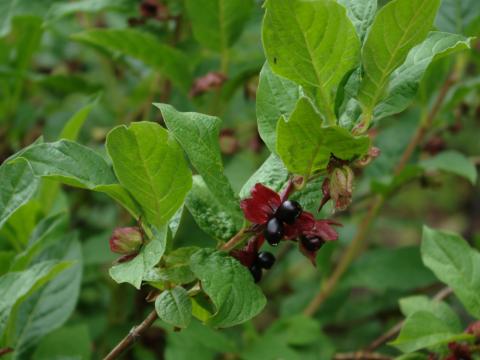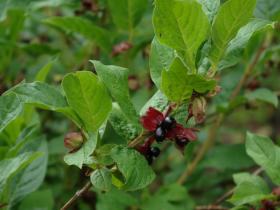Oplopanax horridus
Devil's club is known for it's maple-shaped leaves with spines underneath. This tall plant can grow up to 3 m in height. Flowers are small and whitish, grow in compact slusters, that ripen to unedible red berries in pyramidal clusters.
The roots and the inner bark are the primariy plant organs used in medicine. Devil's club may be used to treat arthritis, ulcers, rheumatism, diabetes, and digestive ailments. The spines could be combined with huckleberries (Vaccinium spp.) and twinberry (Lonicera spp.) to make a paint or dye. The charcoal could also be combined with bear grease for face painting or tattooing. Tea's made of the inner bark are frequently used in diabetes treatments. The wood may also be used to make fishing lures.
Devil's club is widely used by many groups throughout the Northwest as medicine and as protection.
Devil's club grows in moist woods and is often found in wet sites along streams.




